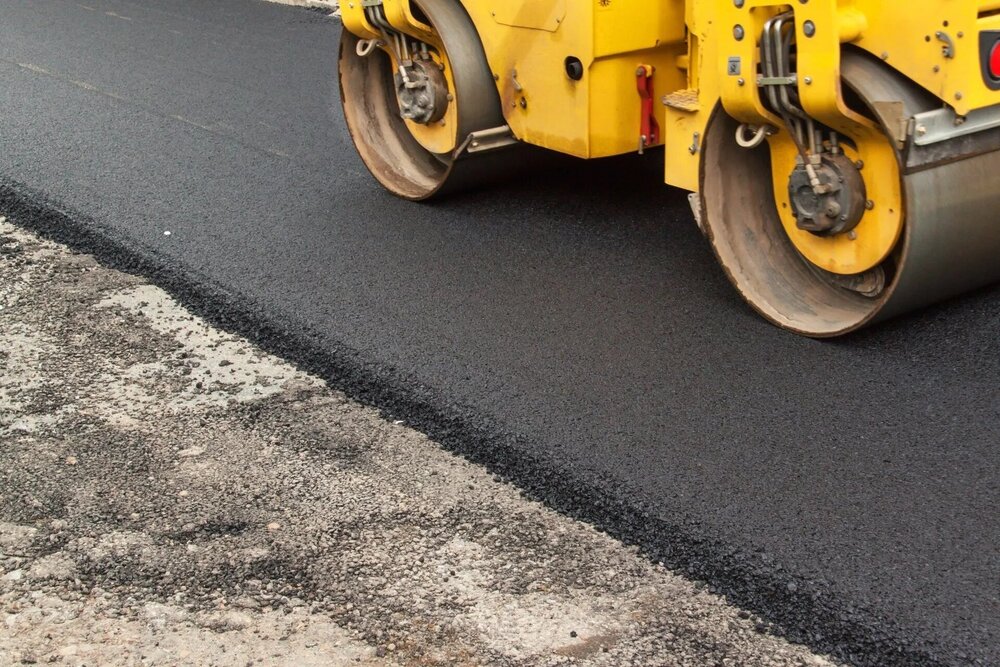The best asphalt paving Stevens Point, Wausau, and Madison, Wisconsin has ever seen is typically applied following a variety of different rules and application concepts. These simple ideas are put into place to ensure that you pour your pavement correctly and keep it from any issues. The hacks below will give you the best chance to achieve a high-quality pour without experiencing any problems.
Gauge Paver Quality – Technical Inspections Ensure Quality
Before you start laying any asphalt paving, you need to make sure that you take a look at the paving machine that will be used. These inspections should be done if you’re laying the pavement yourself or getting somebody else to do it for you. Typically, you’re going to follow a handful of maintenance steps that ensure the machine will run properly and avoids complications with your laying success. Though these machines are quite resistant to damage, they may wear down over time.
For example, you need to check fluid levels, including any coolant or oils, to spot any potential problems. Ask the paving expert to fill these fluids, if necessary, to keep them at the proper level. You may have to pay for these extra fluids, but this additional price is worth it. Beyond this step, though, you also need to check other elements such as the application equipment – such as the hoses – to make sure that they are correctly hooked up and don’t have any breaks or cracks in the surface.
Before you start, make sure to check the settings on the machine and adjust them as necessary. For example, the paver should be set up to apply asphalt paving at the proper depth for your job, which is often as much as six inches. The width of the driveway, as well as the slope, must also be correctly set up on the machine to ensure that things run smoothly. And the screed plate should be set at a reasonable angle to your driveway, usually no more than 45-50 degrees, to get good results.
Rolling Pattern – Maintaining a Steady Path
While you are rolling the asphalt paving out onto your driveway or parking lot, you need to make sure that you keep the pattern quite smooth and efficient. The pattern is the path that you’re taking to pour the pavement and usually varies based on several factors. For example, you need to make sure that the path matches the needs of your paving surface and that it doesn’t cross itself at any point
In this situation, your best friend is rote simplicity. You don’t want to create a pattern that is very complex or hard to follow. Instead, you need a pattern that is as simple as possible to streamline your rolling and prevent complications. For example, straight paths up and down the sides of the paving area help to fully cover the zone with pavement in a way that keeps it secure and stable for years to come.
Just as importantly, you need to make sure that you pour quickly enough to keep the pavement at an even temperature. The speed here will vary depending on the heat of the day and various other factors. Therefore, you need to make sure that you work with contractors when considering this particular paving hack. They can give you the insight that you need to ensure that you don’t make any mistakes when pouring your asphalt pavement.
Various Types of Temperature – How This Impacts Your Pavement
When you’re laying asphalt paving, you need to make sure that you take into account various types of temperature throughout the process. For example, your contractor needs to keep the asphalt at least between 275-300 degrees Fahrenheit while it is in the mixer before application. And when they start rolling it out on the ground, the temperature needs to stay between 220 and 290 degrees.
This temperature level is critical because if your asphalt falls below 185 degrees during the pouring process, it is likely to be too stiff and may end up laying poorly. Even worse, it may cure poorly and cause cracks in the surface that can be hard to fix. Talk to your contractor about this temperature before they start laying the pavement to see how they track it. Make sure that they can show you the heat so that you can ensure that it is appropriate.
Just as importantly, you want to make sure that the temperature is at least 50 degrees Fahrenheit on the day that you pour the pavement. You also need to make sure that the day isn’t too windy either. Lower temperatures than this will cause the paving to cure awkwardly and will lead to other complications. And excessive wind may trigger extra cooling and water evaporation on the pavement that can affect its surface. Importantly, the day should also be cloud-free with no chance of rain to avoid excess moisture.
Proper Compaction – May Require Outside Help
Lastly, you need to make sure that you get the best compaction for your asphalt paving to ensure that it remains secure. Compaction helps to keep your pavement dense and avoids complications with its surface. Just as importantly, extra density helps to ensure that it can withstand a variety of different weathering elements and stay strong for decades after you install it for your home.
Typically, this job is something that your paving experts do either by eye or by estimation, which means that it can be easy to make a mistake and not make the pavement dense enough. Thankfully, this problem can also be avoided if you look to outside help, such as various apps. For example, Volvo Construction Equipment created an app for your Android phones called Density Direct.
This application will take a picture of your asphalt and read its temperature to get a feel for its density. As a result, you can get an idea of whether or not you need to compress the pavement more or if it is within the acceptable thresholds. These thresholds will vary depending on the type of paving job, so make sure that you talk to your paving experts to learn more about this simple hack.
Let Us Help You Out
If you need the best asphalt paving Stevens Point, Wausau, or Madison, Wisconsin can offer, please contact us at Custom Paving & Sealcoating today to learn more. We have been laying pavement of all types for years and fully understand the hacks that we’ve just discussed. Just as importantly, we can give you the inside information that you need on maintenance and other elements of your asphalt to keep it strong and resistant to damage for years to come after installation.

